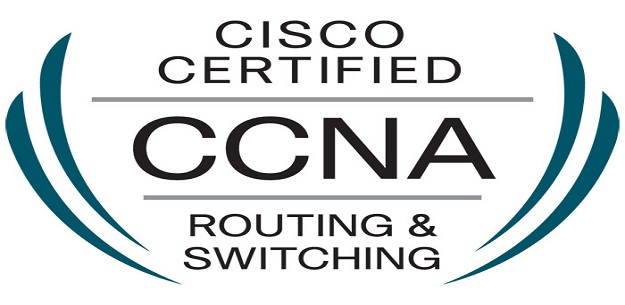CCNA Routing & Switching V3 Training & Certification Courses
Price$799

Overview
The Cisco Certified Network Associate (CCNA) Routing and Switching composite
exam (200-125) is a 90-minute, 50–60 question assessment that is associated with the CCNA Routing
and Switching certification. This exam tests a candidate’s knowledge and skills related to network
fundamentals, LAN switching technologies, IPv4 and IPv6 routing technologies, WAN technologies,
infrastructure services, infrastructure security, and infrastructure management.
Section 1Network Fundamentals
Lecture 1 Compare and contrast OSI and TCP/IP models
Lecture 2Compare and contrast TCP and UDP protocols
Lecture 3Describe the impact of infrastructure components in an enterprise network
Lecture 4Describe the effects of cloud resources on enterprise network architecture
Lecture 5 Compare and contrast collapsed core and three-tier architectures
Lecture 6 Compare and contrast network topologies
Lecture 7 Select the appropriate cabling type based on implementation requirements
Lecture 8 Apply troubleshooting methodologies to resolve problems
Lecture 9 Configure, verify, and troubleshoot IPv4 addressing and subnetting
Lecture 10 Compare and contrast IPv4 address types
Lecture 11 Describe the need for private IPv4 addressing
Lecture 12Identify the appropriate IPv6 addressing scheme to satisfy addressing requirements in a LAN/WAN environment
Lecture 13 Configure, verify, and troubleshoot IPv6 addressing
Lecture 14 Configure and verify IPv6 Stateless Address Auto Configuration
Lecture 15 Compare and contrast IPv6 address types
Section 2 LAN Switching Technologies
Lecture 16 Describe and verify switching concepts
Lecture 17 Interpret Ethernet frame format
Lecture 18 Troubleshoot interface and cable issues
Lecture 19 Configure, verify, and troubleshoot VLANs spanning multiple switches
Lecture 20Configure, verify, and troubleshoot interswitch connectivity
Lecture 21 Configure, verify, and troubleshoot STP protocols
Lecture 22 Configure, verify and troubleshoot STP related optional features
Lecture 23Configure and verify Layer 2 protocols
Lecture 24Configure, verify, and troubleshoot EtherChannel
Lecture 25 Describe the benefits of switch stacking and chassis aggregation
Section 3Routing Technologies
Lecture 26Describe the routing concepts
Lecture 27 Interpret the components of a routing table
Lecture 28 Describe how a routing table is populated by different routing information sources
Lecture 29 Configure, verify, and troubleshoot inter-VLAN routing
Lecture 30 Compare and contrast static routing and dynamic routing
Lecture 31Compare and contrast distance vector and link state routing protocols
Lecture 32 Compare and contrast interior and exterior routing protocols
Lecture 33 Configure, verify, and troubleshoot IPv4 and IPv6 static routing
Lecture 34Configure, verify, and troubleshoot single area and multi-area OSPFv2 for IPv4
Lecture 35Configure, verify, and troubleshoot single area and multi-area OSPFv3 for IPv6
Lecture 36 Configure, verify, and troubleshoot EIGRP for IPv4
Lecture 37 Configure, verify, and troubleshoot EIGRP for IPv6
Lecture 38Configure, verify, and troubleshoot RIPv2 for IPv4
Lecture 39 Troubleshoot basic Layer 3 end-to-end connectivity issues
Section 4 WAN Technologies
Lecture 40 Configure and verify PPP and MLPPP on WAN interfaces using local authentication
Lecture 41Configure, verify, and troubleshoot PPPoE client-side interfaces using local authentication
Lecture 42 Configure, verify, and troubleshoot GRE tunnel connectivity
Lecture 43 Describe WAN topology options
Lecture 44 Describe WAN access connectivity options
Lecture 45 Configure and verify single-homed branch connectivity using eBGP IPv4
Lecture 46 Describe basic QoS concepts
Section 5Infrastructure Services
Lecture 47 Describe DNS lookup operation
Lecture 48 Troubleshoot client connectivity issues involving DNS
Lecture 49 Configure and verify DHCP on a router
Lecture 50 Troubleshoot client- and router-based DHCP connectivity issues
Lecture 51 Configure, verify, and troubleshoot basic HSRP
Lecture 52 Configure, verify, and troubleshoot inside source NAT
Lecture 53 Configure and verify NTP operating in a client/server mode
Section 6Infrastructure Security
Lecture 54Configure, verify, and troubleshoot port security
Lecture 55 Describe common access layer threat mitigation techniques
Lecture 56Configure, verify, and troubleshoot IPv4 and IPv6 access list for traffic filtering
Lecture 57Verify ACLs using the APIC-EM Path Trace ACL Analysis tool
Lecture 58Configure, verify, and troubleshoot basic device hardening
Lecture 59Describe device security using AAA with TACACS+ and RADIUS
Section 7Infrastructure Management
Lecture 60Configure and verify device-monitoring protocols
Lecture 61Troubleshoot network connectivity issues using ICMP echo-based IP SLA
Lecture 62 Configure and verify device management
Lecture 63 Configure and verify initial device configuration
Lecture 64 Perform device maintenance
Lecture 65Use Cisco IOS tools to troubleshoot and resolve problems
Lecture 66 Describe network programmability in enterprise network architecture



